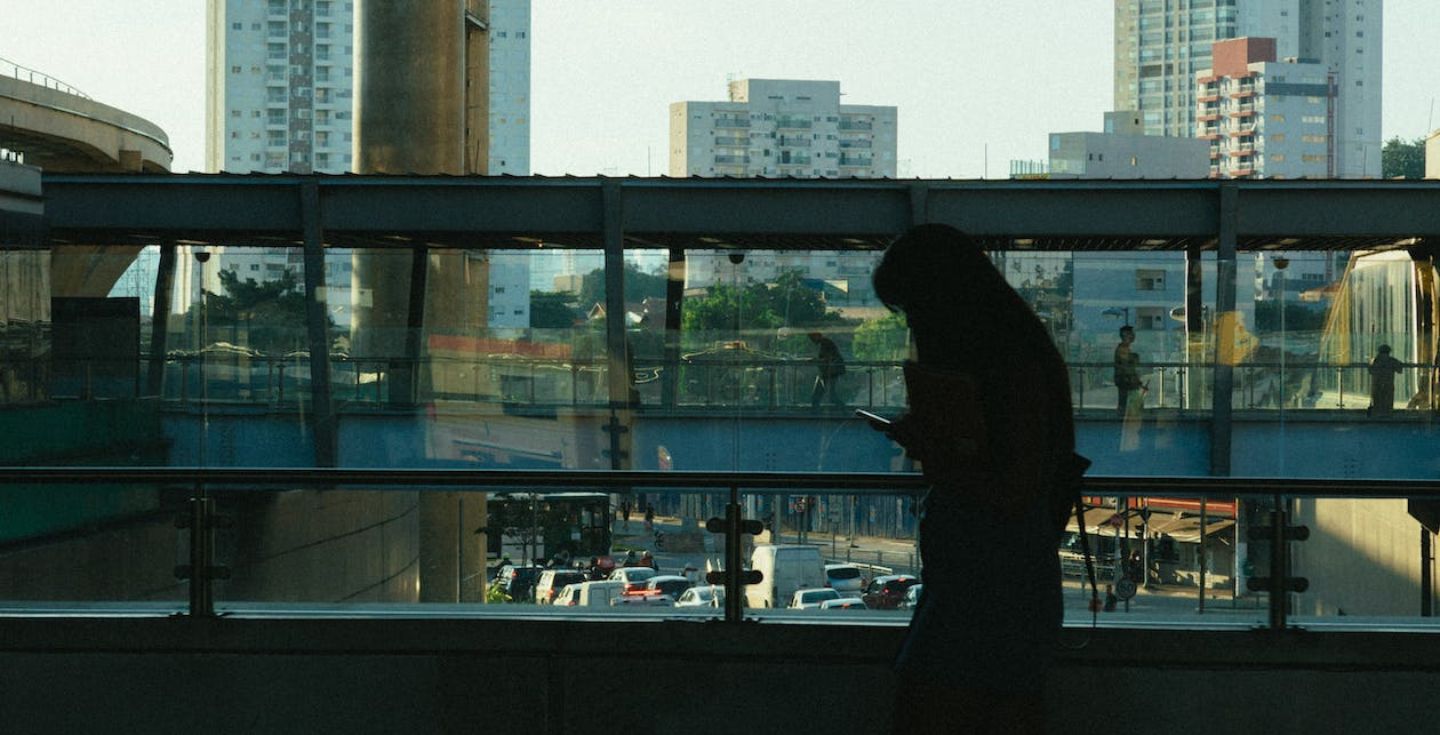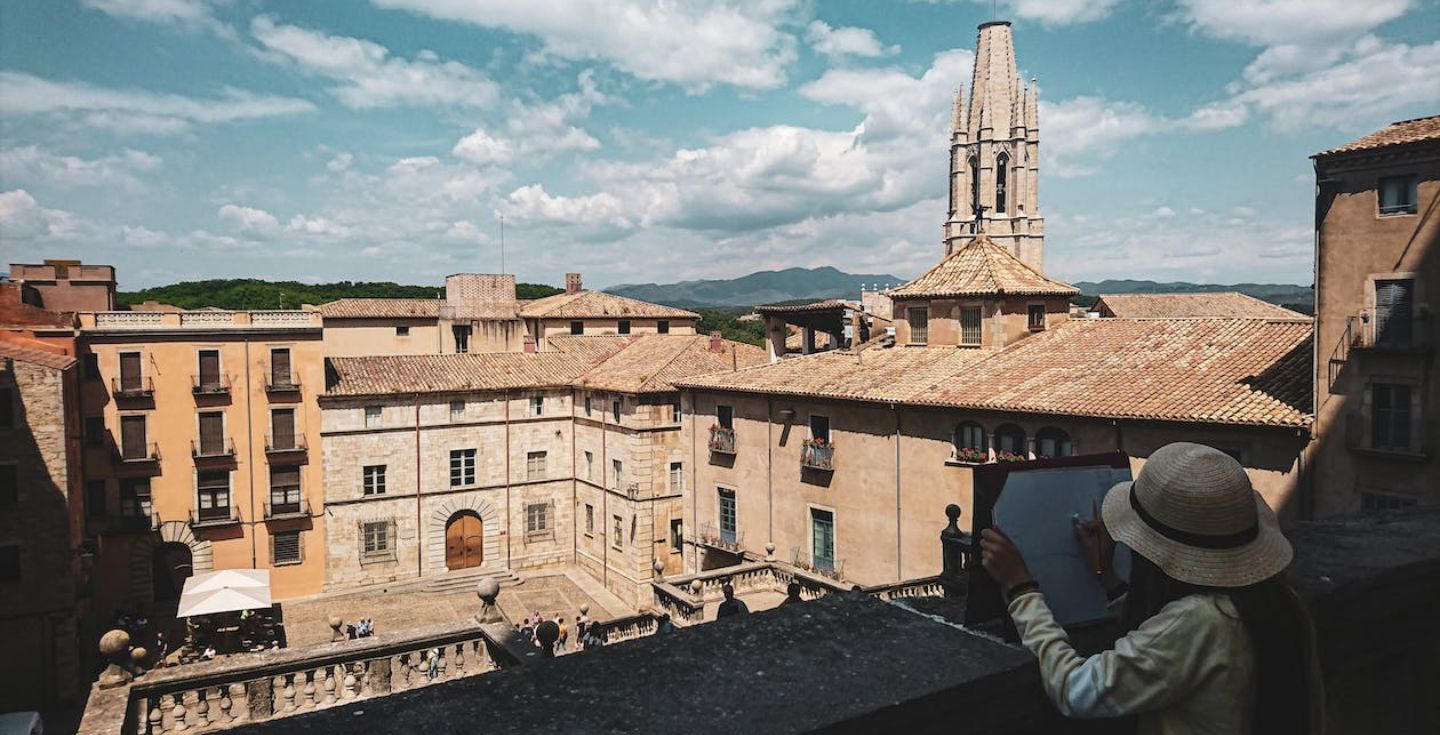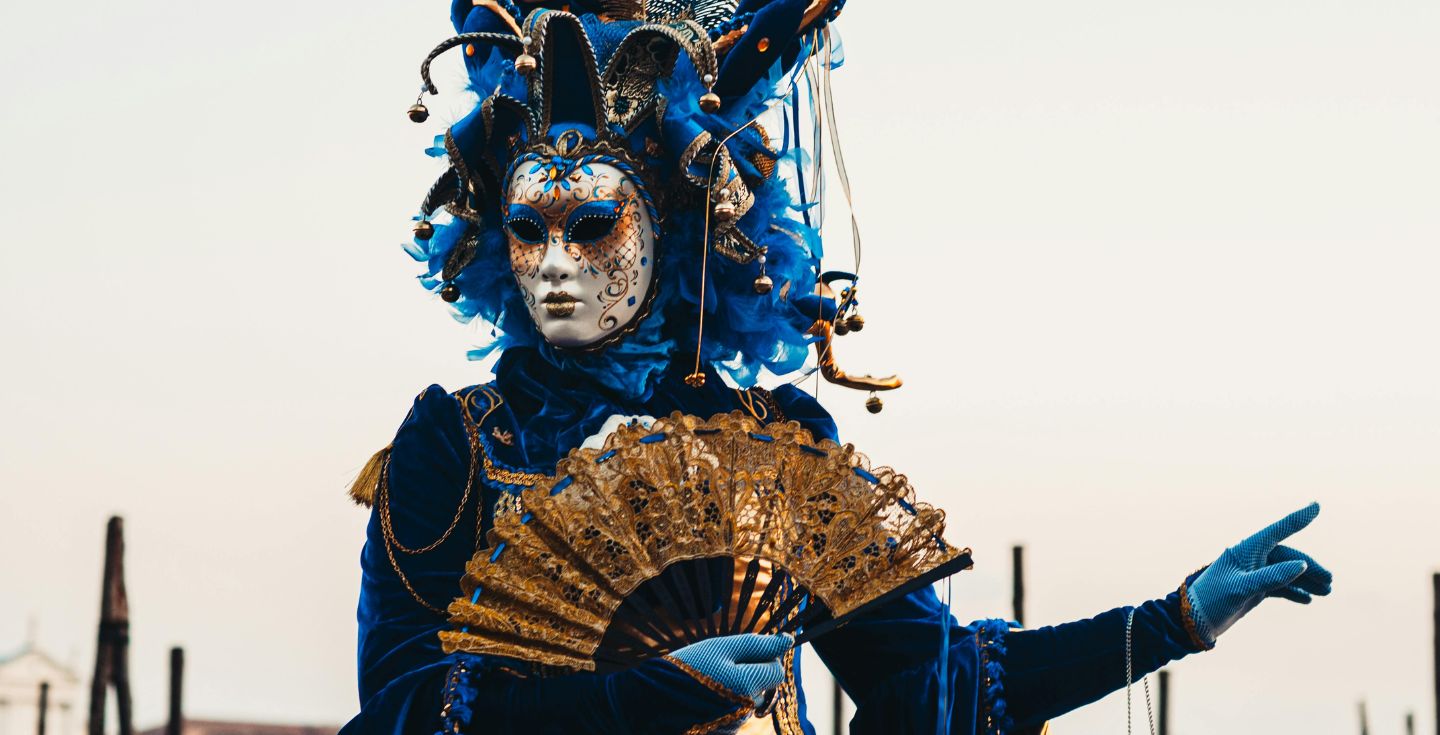15 Best places to visit in China
From the ancient wonders of the Great Wall to the futuristic skyline of Shanghai, discover the best places to visit in China with our top 15 destinations.
When it comes to blending ancient landmarks with modern masterpieces, no other country does it quite like China.
Where else can you find towering skyscrapers sharing the skyline with the ancient Great Wall or traditional tea houses sitting alongside futuristic shopping malls?
If you’re planning a trip to China and need some inspiration while planning your itinerary, here’s a curated list of the best places to visit. We also include how to use your phone in China using an unlimited data travel eSIM.
1. The Great Wall of China
Like most ancient places, The Great Wall of China also has its share of folklore, the most popular one being the legend of Lady Mengjiang (one of China’s four great love stories).
Lady Mengjiang’s husband was sent to build the Great Wall. Worried, she went to bring him warm clothes, but he had already died.
She’s said to have cried so hard that a 400-kilometer-long section of the wall crumbled. Though the exact location is not documented, you can visit the Temple of Lady Meng Jiang in Qinhuangdao, near the eastern end of the Ming Great Wall.
Here are some other sections of The Great Wall of China that are closer to Beijing (China’s capital city) that you can explore:
- Mutiyanya (45 miles from Beijing): It’s less crowded than some other sections, plus facilities like cable cars and toboggan rides make it child- and senior-citizen-friendly.
- Jinshanling section (96 miles from Beijing): Said to be the most beautiful section of the Great Wall, it’s only partly restored, so you can get glimpses of the original fortifications while also benefitting from the cable car.
- Jiankou (62 miles from Beijing): This is completely untouched, making it the most dangerous section of the wall. There are no facilities, but if you’re a serious hiker, you’ll enjoy the experience.
- Juyongguan (37 miles from Beijing): This is the closest section to Beijing — the fort at Juyongguan is a masterpiece of ancient Chinese military architecture. Moreover, it’s one of the few sections that’s wheelchair-friendly.
Ticket prices vary by section, so check the official website before visiting.
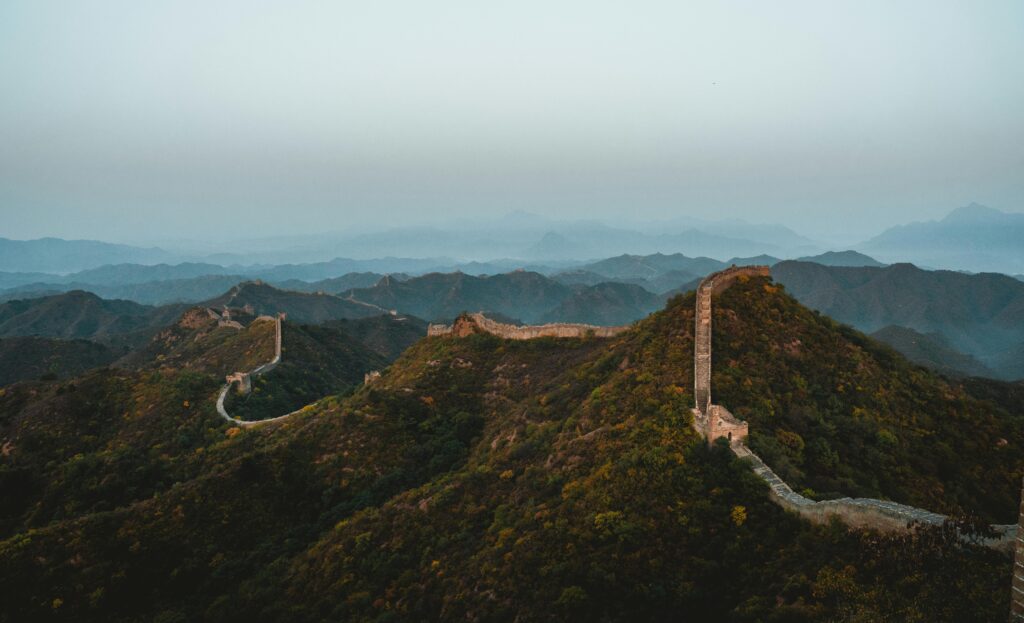
What not to miss
When visiting the Great Wall of China, you can:
- Go hiking across different sections of the wall like Mutianyu (easy), Simatai (moderate), or Jiankou (hard).
- Go for a nighttime walk along the Simatai region, the only part of the wall that’s lit after dark.
- Go camping in Jiankou — the mild weather and clear skies are great for stargazing if you visit in autumn.
- Best time to visit: Spring or autumn
- Travel tip: For a less crowded Great Wall experience, head away from Beijing. Check out Shanhaiguan in Hebei, Zhenbeitai in Shaanxi, and Jiayuguan in Gansu.
2. The Forbidden City (Beijing)
The Forbidden City was built to reflect the Chinese belief in a perfect cosmic order. Different parts of the city were designated for specific ceremonies and rituals, with access limited to particular individuals.
The Forbidden City is open from Tuesday to Sunday, with national holidays on Mondays, and daily during July and August. However, there is a daily visitor limit of 40,000, so book your tickets in advance.
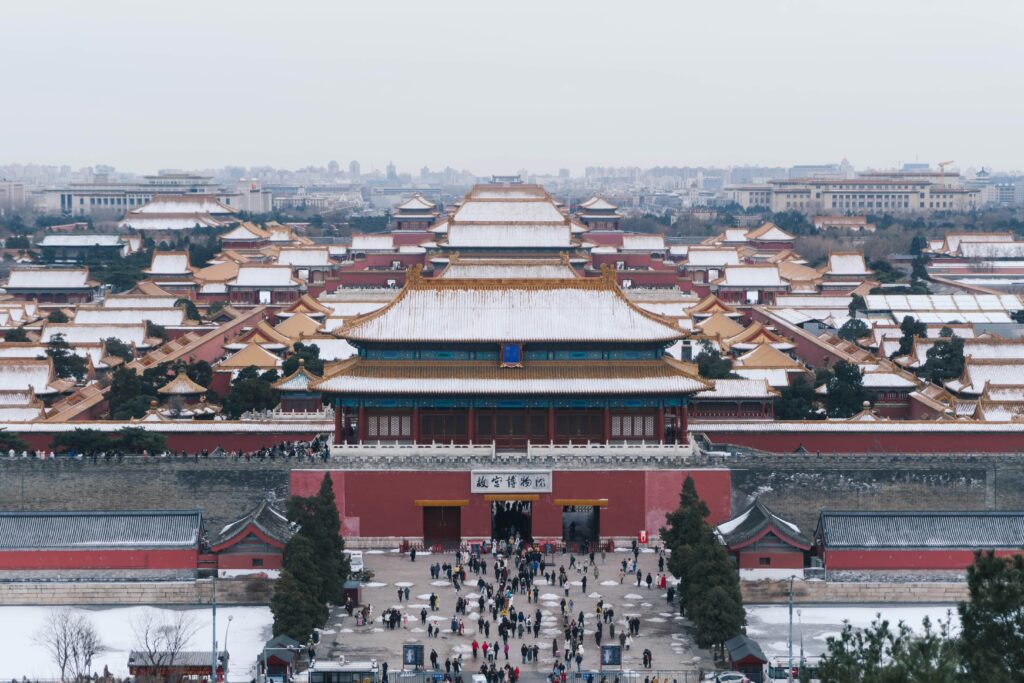
What not to miss
The Forbidden City has a lot to offer in terms of activities. For example, you can:
- Explore the three great halls: the Hall of Supreme Harmony (the big hall used for major ceremonies), the Hall of Complete Harmony (to prepare for ceremonies in the big hall), and the Hall of Preserving Harmony (where government exams were held).
- Visit the Treasure Gallery in The Palace of Tranquil Longevity, which houses a stunning collection of ornamental objects made from gold, silver, jade, and other semi-precious stones.
- Soak in the splendor of the Imperial Garden with its winding paths, pretty pavilions, artificial lakes, and ancient cypress trees.
- Best time to visit: Spring (April to May) and autumn (September to October)
- Travel tip: Explore the many smaller courtyards and walk along the top of the walls for a great view of the palace. With many attractions offering digital tickets for pre-booking, an eSIM for Beijing is key to staying connected and reliably pulling up your passes when needed.
3. The Terracotta Army (Xi’an)
The Terracotta Army is a vast collection of life-sized clay soldiers, horses, and chariots that were buried alongside the first emperor of China to guard him in the afterlife.
With a daily visitor limit of 8,000 tickets are in high demand, so make sure to book your tickets in advance.
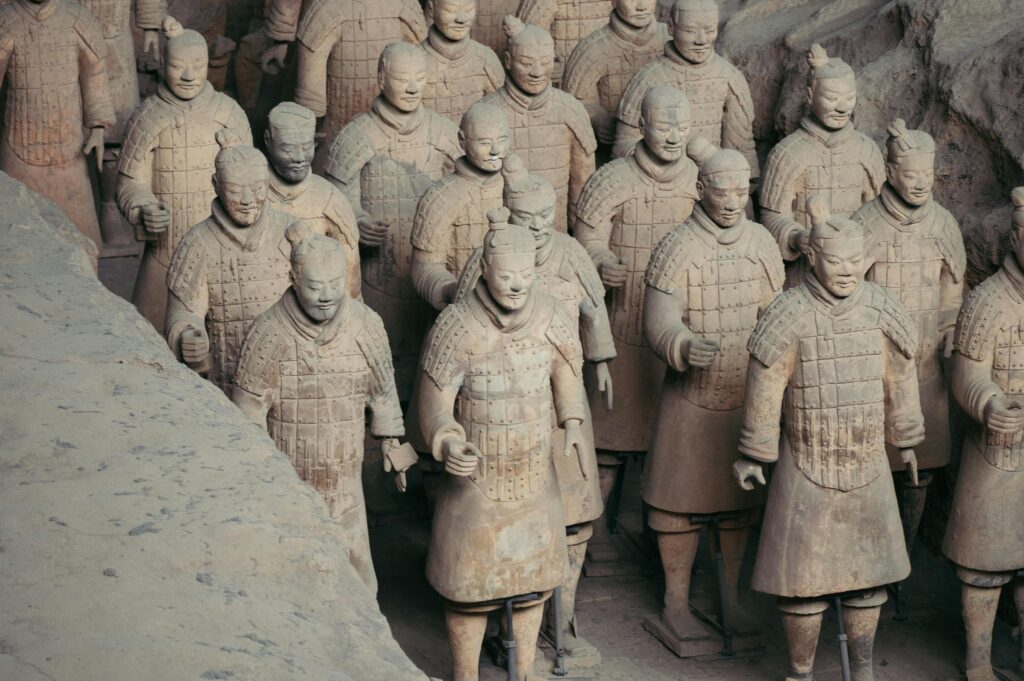
What not to miss
Only three pits — enclosed in Emperor Qinshihuang’s Mausoleum Site Museum — are easily accessible at the moment:
- Pit 1 is the largest, with over 6,000 terracotta warriors and horses in battle formation.
- Pit 2 contains around 1,300 terracotta warriors and horses in different roles, like archers, cavalrymen, and officers.
- Pit 3 is believed to be the army’s command center and has 72 warriors and horses.
- Best time to visit: Spring or autumn. To avoid crowds, try to visit before 10:00 AM or during lunchtime.
- Travel tip: Watch the Netflix documentary Mysteries of the Terracotta Warriors before going.
4. The Li River and Guilin’s karst landscape
Guilin and the Li River offer a natural beauty — rice terraces, limestone peaks, picturesque valleys, and scenic trails — that’s hard to match. Some of the best viewpoints to admire the stunning karst landscapes of the Li River:
- Nine Horse Hill, a unique rock formation resembling nine horses drinking water
- Wuzhi Hill (Cuiping Hill), a less-crowded viewpoint offering beautiful views of the Li River and surrounding countryside
- Seven Star Park which includes a cave, a waterfall, and great views of the Li River
If you have half a day to spare, you can cruise through the Li River. It’s typically four to five hours long and the best way to take in as many sights as possible.
Groups can also take a bamboo raft from Yangdi Village to Nine Horses Fresco Hill for a more authentic experience.
If you’d like to experience the local lifestyle and catch some great views of the Karst peaks, then a great option is biking along the Youlong River, which is a tributary of the Li River.
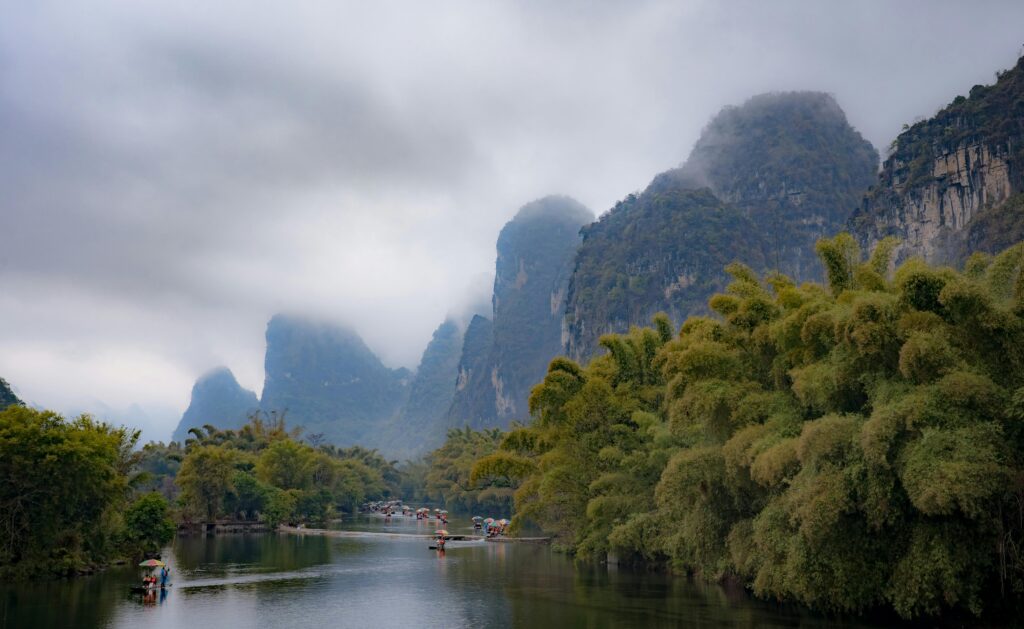
What not to miss
While in the Guilin and Li River area, make sure to add these to your best places to visit in China list:
- Join a Li River Cruise from Guilin to Yangshuo to enjoy some stunning views of the river and the surrounding Karst mountains.
- Hike (or bike) through the Yangshuo countryside and explore its charming villages, terraced rice fields, and hidden caves.
- Check out the 240-meter-long Reed Flute Cave, which has incredible, almost alien-like rock formations.
- Climb the Elephant Trunk Hill (it resembles an elephant drinking water from the Li River) for great views of the river and surrounding mountains.
- Best time to visit: Spring, autumn, or winter
- Travel tip: Head to Xianggong Mountain (17 miles from Yangshuo) for some spectacular sunrise photography of the Karst peaks. It’s a short and easy 30-minute hike.
5. Zhangjiajie National Forest Park
In the Zhangjiajie National Forest Park, the towering sandstone pillars and mist-shrouded mountain peaks coexist with modern marvels like glass bridges and the world’s tallest outdoor elevator, the Bailong Elevator.
The park spans 102 square miles, so you’ll need at least two days to explore it thoroughly. Have a couple of extra days? You can also visit nearby attractions like the Zhangjiajie Grand Canyon, Tianmen Mountain, Yellow Dragon Cave, and Baofeng Lake.
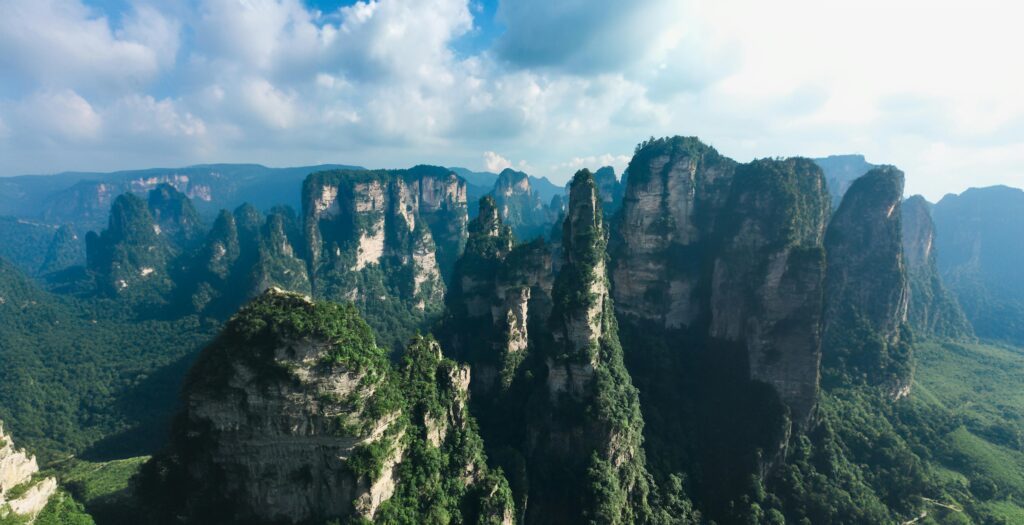
What not to miss
Zhangjiajie National Forest Park has five main scenic areas:
- Yuanjiajie: Home to the iconic Avatar Hallelujah Mountain, the pillar that inspired the movie’s floating mountains
- Golden Whip Brook: A scenic valley perfect for hiking, with crystal-clear streams and waterfalls
- Huangshi Village: A beautiful village in the mountains that gives you a glimpse into local life and culture
- Yangjiajie: Famous for its towering peaks and winding mountain roads, it’s a prime spot for panoramic views
- Tianzi Mountain: Features unique peaks and stunning viewpoints, including Tianzi Peak, the highest peak in the park
- Best time to visit: In April — the weather is mild (no rains), the peak season hasn’t yet started, and there are no public holidays.
- Travel tip: Mountain weather is unpredictable, with rain about 200 days a year, so pack accordingly. Stay at a hotel near the park, not in Zhangjiajie City, to start early and avoid morning crowds.
6. Shanghai: The Bund and modern skyline
Shanghai, China’s largest city, has it all — futuristic architecture, stunning skylines, epic shopping, and incredible food.
The best part is that many of Shanghai’s top tourist attractions, such as The Bund, Yu Garden, and People’s Square, are free to visit.
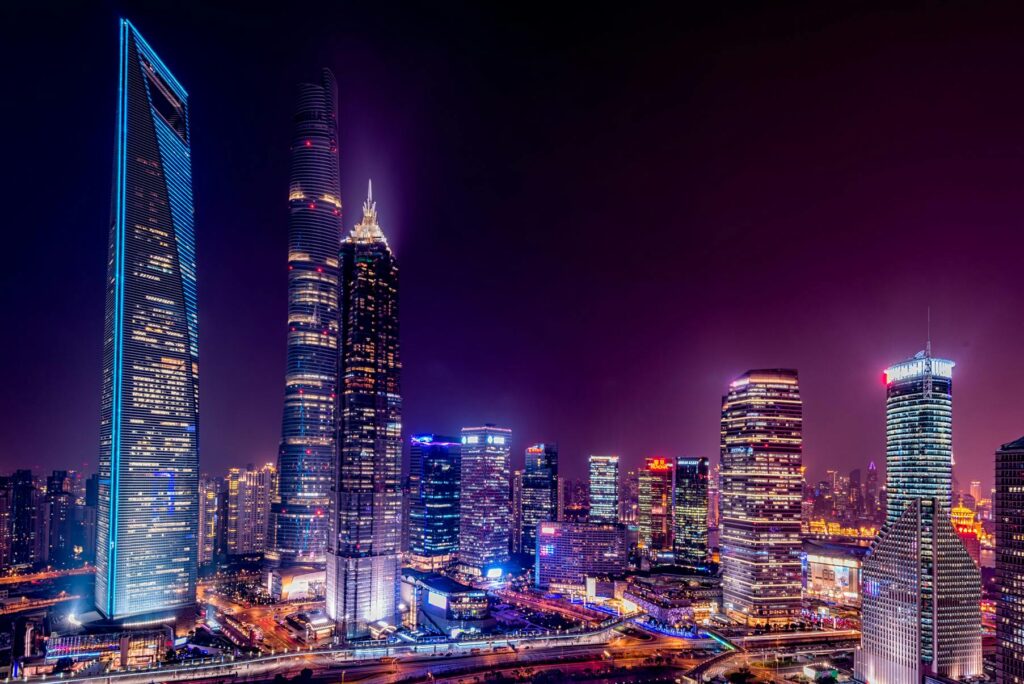
What not to miss
When visiting Shanghai, make sure to hit these must-see spots:
- Go to The Bund for panoramic views of the Pudong skyline, especially when the city lights up at night.
- Head to the top of the Oriental Pearl Tower for panoramic city views and some shopping.
- Explore Yu Garden, a classical Chinese garden with its intricate rock formations, ponds, and pavilions.
- Check out Huanghe Road or Tianzifang for authentic Shanghai street food like xiaolongbao (soup dumplings) and stinky tofu.
- Visit the Jade Buddha Temple, one of Shanghai’s few active Buddhist monasteries.
- Wander through Qibao Ancient Town, a well-preserved water town 11 miles from Shanghai.
- Best time to visit: Autumn (October and November)
- Travel tip: Bargaining is expected if you’re shopping at local markets. Start by offering around 20% less than the initial price and gradually increase your offer during negotiation. Enjoy your shopping connected to the internet with an eSIM for Shanghai.
7. Chengdu
Chengdu, the “Hometown of Giant Pandas,” is a charming city in southwest China. In addition to being home to over 200 pandas, the surrounding areas have numerous historical sites and attractions.
These make Chengdu perfect for both quick weekend getaways and longer visits.
What not to miss
Don’t forget to add these to your Chengdu itinerary:
- Visit the Chengdu Research Base of Giant Panda Breeding for some panda-watching.
- Get a glimpse of Chengdu’s ancient architecture in the Jinli Ancient Street or the Huanglongxi Ancient Towns.
- Immerse yourself in Taoist and Buddhist traditions at Daci Temple and Baoguang Temple.
- Visit UNESCO World Heritage Sites near Chengdu, like Leshan Giant Buddha, Mount Emei in Leshan, and Jiuzhaigou Valley in Aba.
- Best time to visit: All year round
- Travel tip: For an interactive experience, sign up for the one-day Panda Volunteer Program, where you can prepare panda-friendly meals, observe feeding sessions, and meet these adorable creatures up close. You’ll even get a volunteer certificate to keep as a souvenir.
8. Jiuzhaigou Valley
Jiuzhaigou Valley, a UNESCO World Heritage Site, is known for its lakes, waterfalls, and vibrant forests, making it a must-visit destination for both nature lovers and photographers.
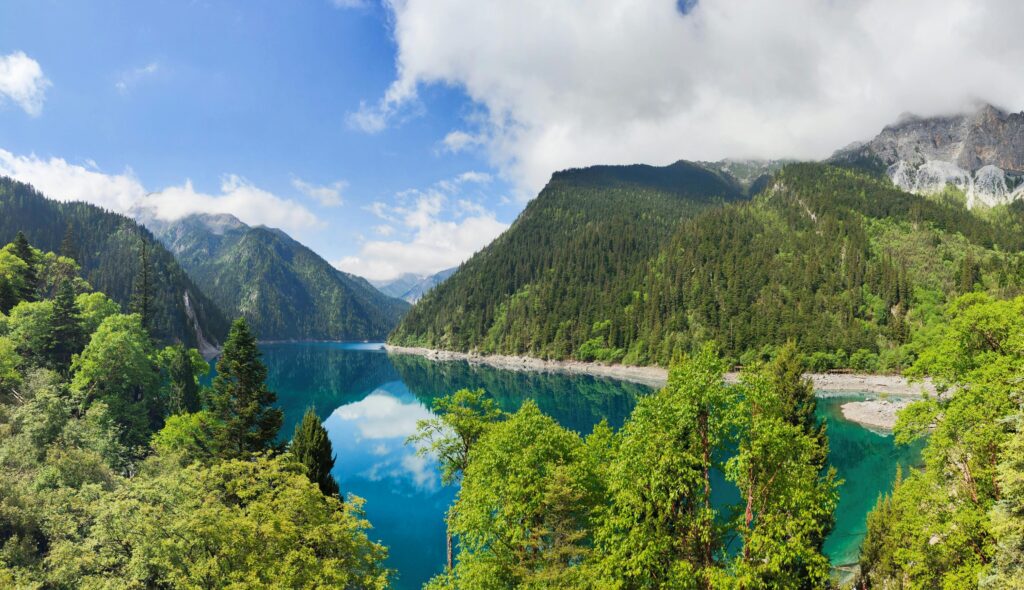
What not to miss
Every tourist visiting Jiuzhaigou Valley should plan to:
- Check out the Five Flower Lake, one of the most photographed spots in the valley.
- Meet some pandas and golden monkeys at Rize Valley.
- Visit the Nuorilang Waterfall (the biggest waterfall in the region) and Pearl Shoal Waterfall.
- Explore the nearby lakes, including Mirror Lake, Reed Sea, and Arrow Bamboo Lake.
- Best time to visit: Autumn
- Travel tip: As Jiuzhaigou National Park is at the edge of the Tibetan Plateau, it’s close to a couple of Tibetan villages where you can stay overnight and experience Tibetan culture firsthand.
9. Tibet
Tibet is one of our top recommended places to visit in China, with its serene spirituality, majestic mountains, and genuine warmth, is a land that’ll feed your soul. You can escape from the chaos in one of Tibet’s many monasteries or reconnect with nature in the vast, untouched landscapes.
On a practical note, although Tibet is part of China, you’ll need a Tibet Travel Permit and your Chinese Visa to visit the region. So make sure to get one beforehand.
What not to miss
While in Tibet, be sure to check out these highlights:
- Visit the Jokhang Temple, which houses the Jowo Shakyamuni statue, believed to be a lifelike image of the Buddha.
- Explore Norbulingka, the former summer palace of the Dalai Lamas, now a beautiful park with stunning gardens.
- Buy local handicrafts like prayer flags, thangka paintings, and jewelry at Barkhor Street.
- Sit in on the animated monk debates at Sera monastery, where every afternoon, two monks engage in lively discussions on Buddhist philosophy.
- Best time to visit: Spring or autumn
- Travel tip: To visit Mount Everest Base Camp, Samye Monastery, and Basumtso Lake, you’ll need an Alien’s Travel Permit, which you can get at the Local Public Security Bureau in Lhasa.
10. Hangzhou and West Lake
Among our many favorite places to visit in China, Hangzhou and the West Lake area truly stand out. Unlike some of the other popular cities in China, Hangzhou moves at a slower pace.
The West Lake, tea plantations, and water towns make for a relaxing getaway. While you can explore West Lake and its surrounding areas in a day, a two-day trip will give you time to explore some other attractions.
Get a public transportation card (Z card), and rent a bike in Hangzhou to move conveniently around the city and explore the regions around West Lake.
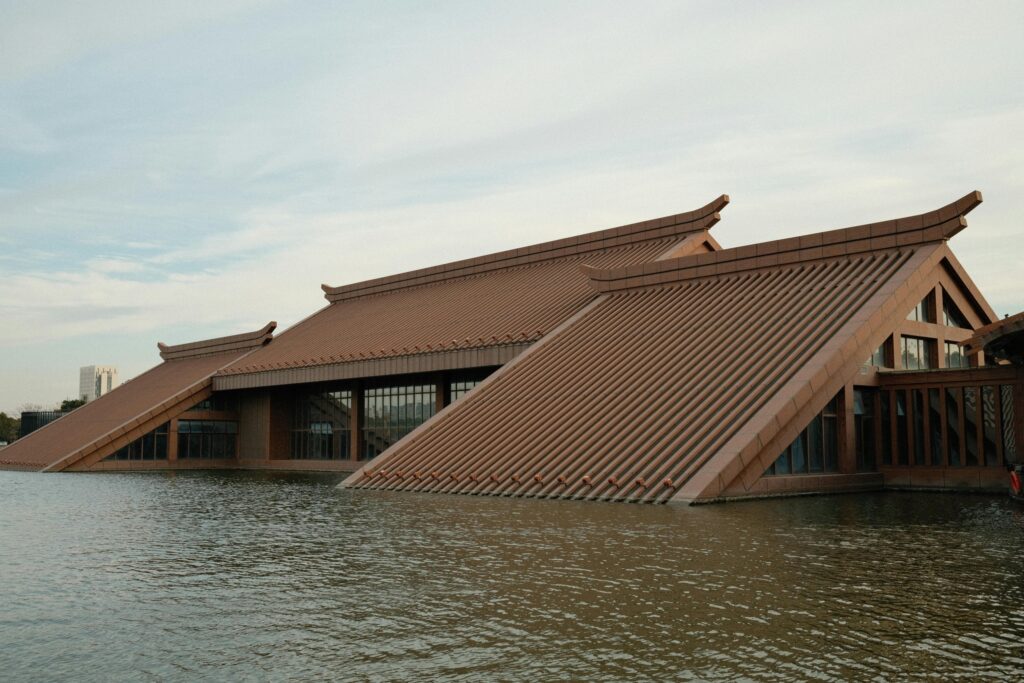
What not to miss
When exploring Hangzhou, make sure to:
- Take some great photos of the city and lake at Leifeng Pagoda.
- Walk along Su Causeway, a scenic walkway that winds through the lake.
- Visit Meijiawu Tea Plantation to learn about tea production and sample local teas.
- Delve into the ancient history of Chinese tea at the China National Tea Museum.
- Explore Hefang Street, which is filled with shops, restaurants, and traditional tea houses.
- Best time to visit: Spring (March and April)
- Travel tip: If you’re looking to buy a keepsake, Hangzhou Silk (which has a history of 2,500 years) is worth buying.
11. Suzhou
Suzhou, known as the smallest city in China, stands out as one of the top places in China to visit due to its beautiful classical gardens and historic charm.
It’s filled with ancient temples, classical gardens, and picturesque watertowns. This extensive network of canals and waterways also gives the city the name “Venice of the East.”
The Suzhou local cuisine is also quite interesting. Make sure to try some of the popular dishes like:
- Squirrel mandarin fish (deep-fried mandarin fish shaped like a squirrel)
- Taihu three whites (which has white fish, white shrimp, and whitebait from the Taihu Lake)
- Candied osmanthus flowers (osmanthus flowers preserved in sugar syrup)
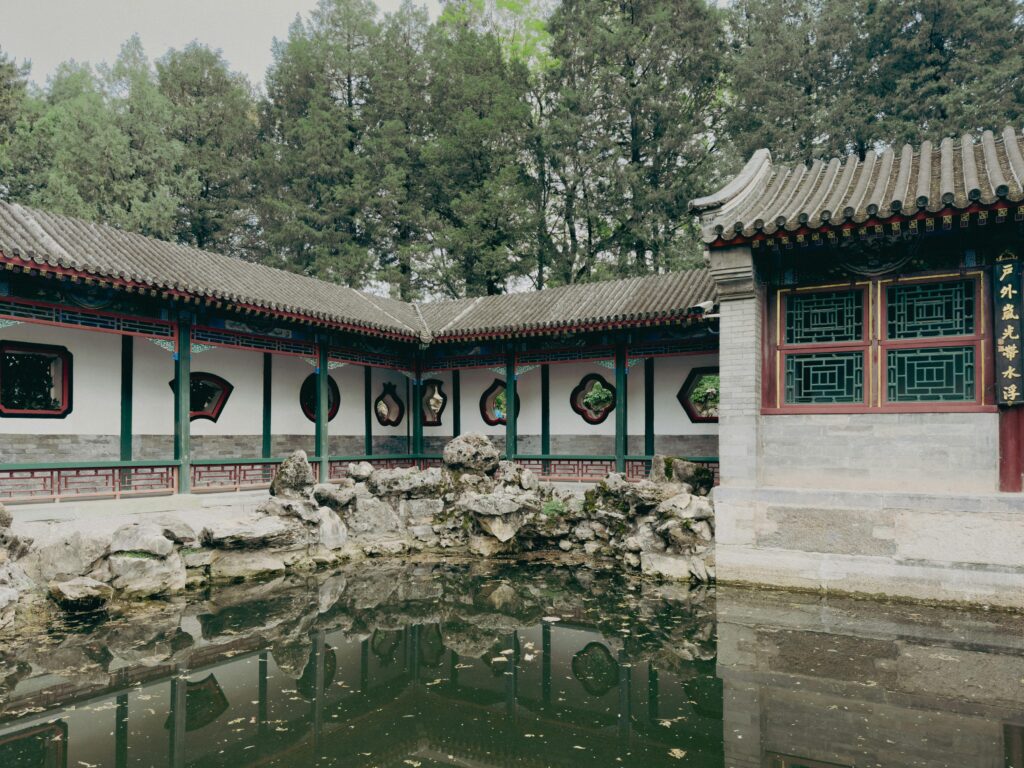
What not to miss
While you’re adding Suzhou to your top places to visit in China itinerary, make sure to also include:
- Visit Humble Administrator’s Garden, a UNESCO World Heritage Site and the largest classical garden in Suzhou.
- Take a cruise on the Suzhou Grand Canal or explore one of the water towns like Tongli or Zhouzhuang.
- Immerse yourself in the tranquility of ancient temples like Hanshan, Chongyuan, or Xiyuan.
- Learn about the history and production of silk at the Suzhou Silk Museum.
- Watch a traditional Kunqu opera performance, a unique form of Chinese theater with elaborate costumes and minimalistic set designs.
- Best time to visit: From April to October
- Travel tip: Unlike in larger cities, most Suzhou locals (including taxi drivers) don’t speak English. So learn some basic Mandarin words and keep a phrasebook with you.
12. Lijiang Old Town
Lijiang Old Town is another famous UNESCO World Heritage Site renowned for its well-preserved Naxi architecture.
The Naxi people are an ethnic group in the Yunnan Province of China. The houses are made of wood and stone, with beautiful wooden carvings and black tile roofs.
What not to miss
To experience the best of Lijiang, make sure to:
- Visit the Dongba Culture Museum to learn about the history and customs of the Naxi people.
- Join a bonfire party on Sifang Street, where there are plenty of dance performances most nights.
- Climb Lion Hill, the highest point in Lijiang Old Town, for some great aerial shots of the streets below.
- Best time to visit: All year round
- Travel tip: If you need some nice backdrops for your selfies and photos, head to Dayan Flower Lane (an alley filled with flowers) or the alley near The Stone Bridge (an old broken bridge), usually decorated with oil-paper umbrellas.
13. Mount Huangshan (Yellow Mountain)
Mount Huangshan in Anhui Province is a must-visit destination for anyone exploring eastern China. Despite its name, the mountain isn’t actually yellow. It’s named after the legendary Yellow Emperor (Huang Di), the mythical ancestor of the Chinese people.
Yellow Mountain is known for two breathtaking natural wonders:
- The sea of clouds, where the peaks appear like islands in the sky, especially between November and May after rain or snow
- The oddly-shaped rocks, each with a unique name based on appearance and legend
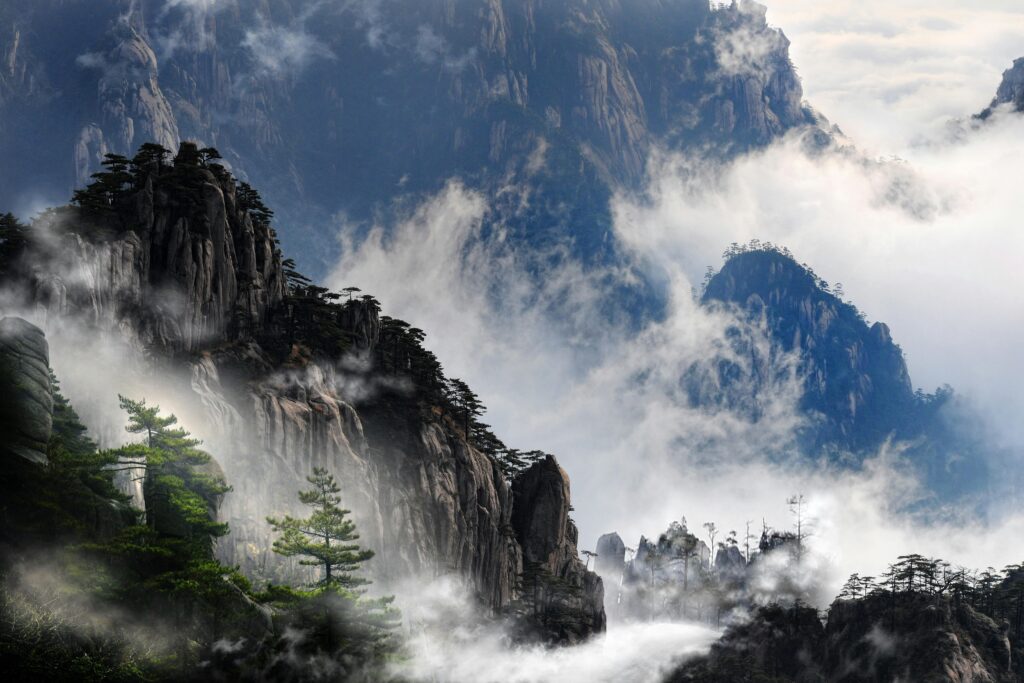
What not to miss
Make the most of your Huangshan adventure by experiencing these must-see highlights:
- Check out one of the many rock formations like Monkey Watching the Sea (a monkey-shaped boulder overlooking the North Sea of Clouds), Immortal Pointing the Way (looks like a man in a cloak holding up a hand), or Flying-over Rock (a tall standing stone that looks like it fell from the sky).
- Watch the sunrise and sunset from one of the many peaks like Bright Top Peak or Dispelling Cloud Pavilion.
- Hike across the towering peaks and dramatic West Sea Grand Canyon trails.
- Best time to visit: Between March and mid-November
- Travel tip: If you’d rather not hike, visit Yellow Mountain during winter for a restorative experience at one of the hot springs at the mountain’s base.
14. The Silk Road
The ancient Silk Road is a long historical trade route linking Northwest China’s cities. The itinerary includes 14 major stops and takes around 15 days.
Alternatively, you can also go on a shorter trip (7-10 days), stopping only at key cities Xian, Dunhuang, Jiayuguan Pass, Zhangye, and Lanzhou.
The 14 major China Silk Road cities
Discover the rich history and unique attractions of these 14 Silk Road cities:
- Luoyang, known for the Longmen Grottoes
- Xi’an, home of the Terracotta Army
- Ningxia, famous for the Helan Mountain Rock Art
- Tianshui, home to the magnificent Maiji Mountain Grottoes
- Lanzhou, popular for its Lanzhou Ramen
- Zhangye, known for its colorful Danxia landforms
- Jiayuguan, the westernmost point of the Great Wall of China
- Dunhuang, home to the Mogao Caves (also called Caves of a Thousand Buddhas)
- Qinghai, which boasts the world’s highest railway (Qinghai-Tibet Railway)
- Turpan, an oasis city known for grape cultivation
- Urumqi, known for the Red Hill Pagoda that’s believed to ward off evil spirits
- Kucha, an ancient kingdom with a rich cultural heritage
- Hotan, famous for its jade production
- Kashgar, a gateway to the Silk Roads in Central Asia, South Asia, and the Middle East
- Best time to visit: From April to October
- Travel tip: Due to the route’s length, make it a dedicated itinerary to fully immerse yourself in each location without rushing.
15. Hainan Island
Hainan Island in the South China Sea is a tropical paradise that rivals Hawaii for marine adventures. It’s even got some great beachcombing spots where you can find interesting shells and driftwood.
Like mainland China, Hainan Island has some interesting historical sites, such as Qionghai City and Qianhe Ancient City.
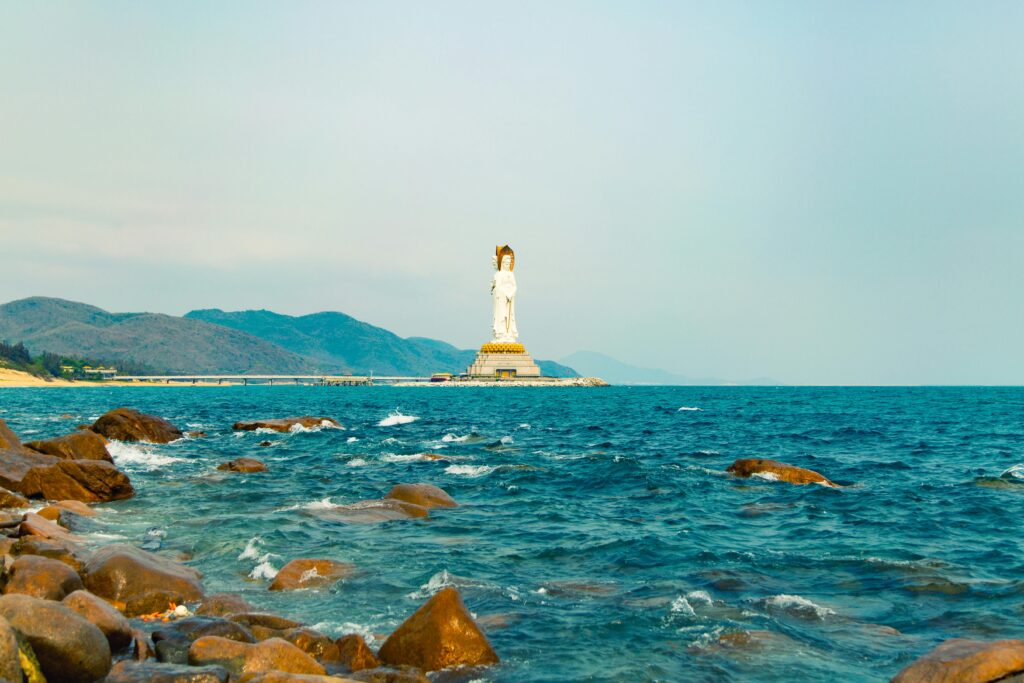
What not to miss
While in Hainan, make sure to:
- Relax or indulge in water sports at beaches like Sanya Bay, Yalong Bay, or Dadonghai Beach.
- Explore Nanwan Monkey Island, which is 95% green and home to over 2000 species of monkeys.
- Visit Wuzhishan National Park, a tropical rainforest park with diverse wildlife and breathtaking waterfalls.
- Catch a movie at Movie Town in Haikou, an artificial town with great movie studios and theatres.
- Best time to visit: December to March
- Travel tip: If you’re from one of these 59 countries, only plan to visit Hainan Island (and not mainland China), and your trip is under 30 days, you don’t need a Chinese visa.
Enjoy uninterrupted internet in China with Holafly eSIMs
Hopefully, now you have the answer to your burning question: What are the best places to visit in China?
China’s a fascinating place, but navigating a country where English isn’t widely spoken and the internet’s a bit restricted can be tricky.
Whether it’s learning Mandarin phrases on the go, downloading audio guides, or signing up for local apps, you can’t do without reliable internet access in China.
If you’d prefer to skip the hassle of getting a physical China SIM card, embeddable SIM cards (or eSIMs) can be a convenient alternative.
With the best eSIM for China, you also get benefits like unlimited data access, affordable plans, and zero roaming charges on international data calls.
Why not try Holafly, arguably the best eSIM for China? A two-week plan costs only $47.90 ($3.42 per day), and longer plans offer even better rates. If you’d prefer, you can select a China+Hong Kong+Macau eSIM instead, which offers unlimited data for all three locations.
Plus, you can set up in minutes — simply purchase your eSIM from the Holafly website and scan the QR code upon landing in China to activate it instantly.





 Language
Language 


















 No results found
No results found





